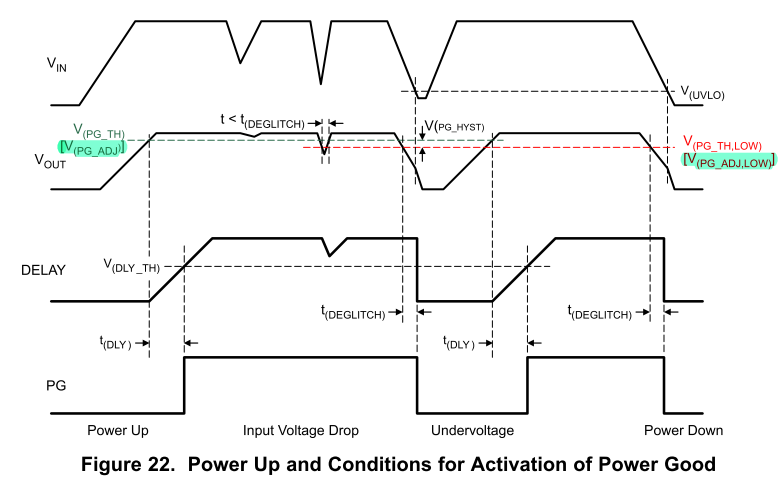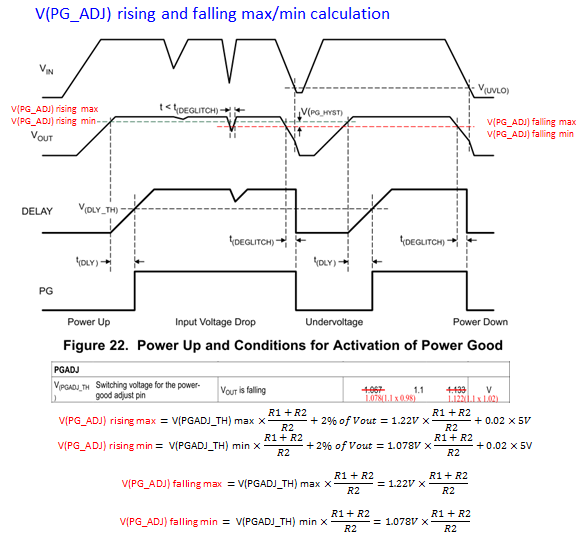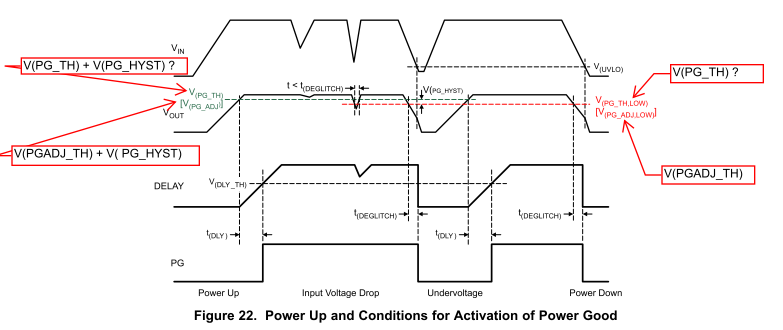Hello,
Please answer following question from customer.
Q1: V(PGADJ_TH)
Please advise, if following V(PGADJ_TH) min, typ and max voltage will change linked to Vout voltage or these values are constant in spite of Vout is 4.9V(-2% of 5V).
If V(PGADJ_TH) min and max voltage change linked to Vout voltage, please advise how to calculate min and max voltage when Vout is 4.9V and 5.1V.
Q2: V(PGADJ_TH) accuracy
Datasheet 7 describe V(PGADJ_TH) is 1.067V(min), 1.1V(typ) and 1.133V(max) and it is 1.1V +/- 3%.
But datasheet page 13 describes as follows.
Please confirm that V(PGADJ_TH) accuracy is +/-3% or +/-2%.
Q3: Vout threshold when PG turns high and low
I want to confirm my understanding of turn on and off Vout threshold when using Adjustable Power-Good Threshold.
Q3-1: V(PG_ADJ)max
Is it correct that V(PG_ADJ) max that is Vout highest threshold of PG turn high is calculated as follows?
Q3-2: V(PG_ADJ,LOW)min
Please advise which equation is correct to calculate V(PG_ADJ,LOW)min that is Vout lowest threshold of PG turn low.
Best Regards.











